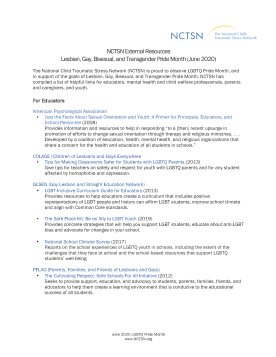
LGBTQ Pride Month External Resources
Provides external resources related to LGBTQ Pride Month.
June was first declared as LGBTQ Pride Month in 2000. Since then, June has been a time to acknowledge a positive stance against discrimination and violence toward lesbian, gay, bisexual, transgender, and queer /questioning (LGBTQ) people to promote their self-affirmation, dignity, equality rights, increase their visibility as a social group, build community, and celebrate sexual diversity and gender variance.
LGBTQ Pride Month is also a time to bring awareness to the experiences of the LGBTQ community. LGBTQ youth are routinely harassed because of their sexual orientation. In 2015, it was reported that out of 10,528 middle and high school students surveyed 85.2% LGBTQ students experienced verbal harassment at school in the past year because of their sexual orientation, 57.6% felt unsafe at school because of their sexual orientation and 31.8% skipped a day of school in the past month because of safety concerns.
The National Child Traumatic Stress Network (NCTSN) has compiled a list of helpful resources for parents and caregivers, children and teens, mental health providers, child welfare and juvenile justice professionals, healthcare providers, educators and school staff, and policy makers.
A list of external resources related to LGBTQ Pride Month is available here.

Provides external resources related to LGBTQ Pride Month.
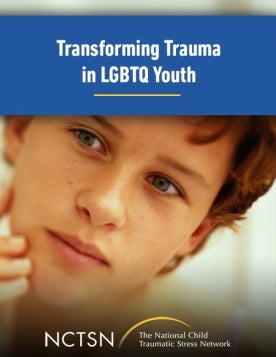
Discusses how professionals can recognize qualities of a safe, affirming environment where staff can explore personal views and values, and articulate professional responsibilities.
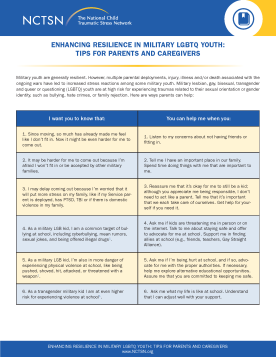
Offers information to parents and caregiver on how to help military children and adolescents who identify as LGBTQ deal with the many challenges they face. This tip sheet describes common thoughts or situations LGBTQ youth may have and how parents and caregivers may help.
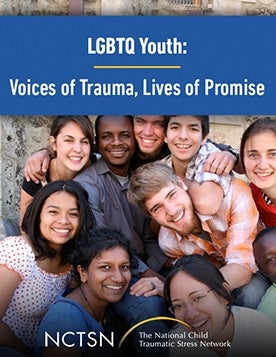
Features five LGBTQ youth who discuss their own trauma experiences related to their respective LGBTQ identities, how they strengthened their resilience, and how professionals helped them.
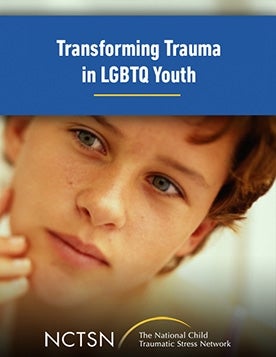
Provides a map for increasing trauma therapist's comfort, willingness, and knowledge to initiate and facilitate sexual health conversations that promote LGBTQ youth coming to know the positive potential for their sexual development and health.
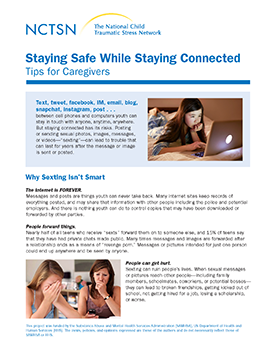
Provides information to parents and caregivers about keeping children safe online. This fact sheet describes why sexting is not smart and how sexts can be used to hurt or bully.
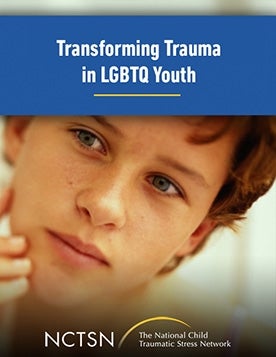
Discusses the Safe Places, Safe Spaces video product.
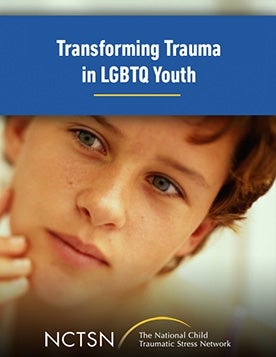
Offers concrete strategies and recommendations for providers working with LGBTQ youth who have experienced trauma. This webinar series discusses how to increase access to services, create a safe environment for care, and work with families and schools.
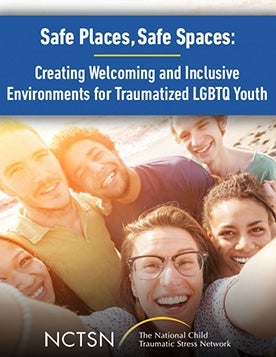
Introduces the viewer to the needs of lesbian, gay, bisexual, transgender and questioning (LGBTQ) youth who have experienced trauma.
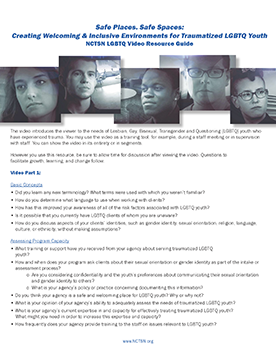
Offers guidance on how to use the Safe Places, Safe Spaces video.
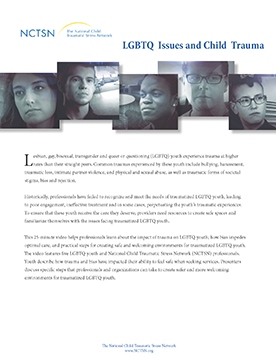
Offers an introduction to the Safe Places, Safe Spaces video. This fact sheet gives a brief overview for working with LGBTQ youth as well as a synopsis of the video, and suggested resources.
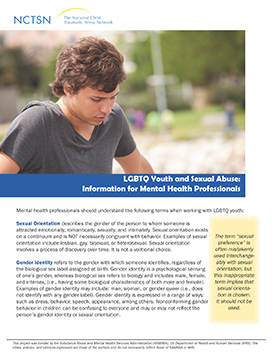
Provides a short glossary of relevant terms and a chart delineating the continuums of sex, gender, and sexual orientation.